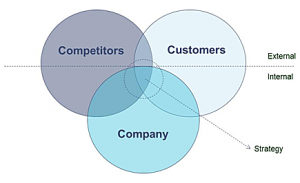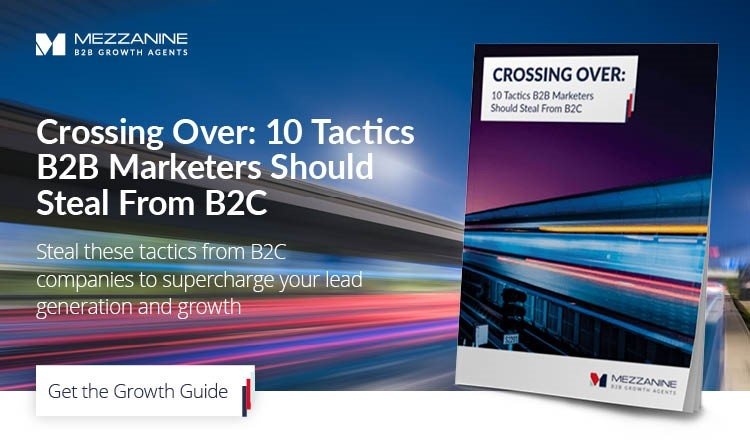The Best And Easiest Marketing Strategy Framework You'll Ever Use

At this time of year, many companies are thinking about their marketing strategy. Do you have one, is it effective, will it take your company in the right direction next year and achieve your business goals?
In this post we're sharing the simplest, most effective framework for developing a marketing strategy. This framework has stood the test of time because it's easy to understand and it delivers powerful results.
Before we dive into the nitty-gritty of developing a marketing strategy, let's be clear about what a marketing strategy is.

What is a Marketing Strategy?
There are three components to a marketing strategy, and these differ from the elements of a business strategy (read The Difference Between Business Strategy and Marketing Strategy).
Simply put, a marketing strategy helps achieve the goals laid out in your business plan.
Here's what goes in a marketing strategy:
1. Target Market
One of the most important decisions that companies make in developing their marketing strategy is about their target market. It's a mistake (even though it's tempting) for a business to try to appeal to everyone. It’s called a “target” market for a reason. Miss the bull's eye and you loose. You must identify your target market, address the pain points and determine what your potential customers are looking for.
2. Positioning
Once you've established your target market, it's time to decide how your company will position itself in that market. Positioning is easiest to think of as 'what do you want your reputation to be?" When people talk about your company, what do you want them to say? Are you the low cost competitor? The premium service provide? The cutting edge innovation company? To determine an effective position, think of your company's strengths in light of what your target market wants and needs. That's usually the best position to take.
3. Messaging / Competitive Advantage / Value Proposition
Identify what makes your company stand out from the crowd. If you don’t clearly define your competitive advantage, your marketing will end up as just a lot of noise in the marketplace because you won't have a solid message. Too many companies don’t realize this and end up wasting a lot of time and money.
The Best Marketing Strategy Framework You'll Ever Use
One of the most useful frameworks for marketing strategy is called the '3 C model'. Like most brilliant things, its incredibly simple. For many businesses, ‘strategy' can seem like a lofty or impractical focus. They are too busy keeping customers happy right now and keeping payroll paid this week to enjoy contemplating a strategy. But a solid strategy is the basis for all successful businesses. And the 3C framework is a great and easy way to define your strategy.
The 3 ‘C’s in the model are Company, Customer and Competitor. And at the intersection of these 3 components is good strategy:
The idea is that at the intersection of a company's strengths, the needs of a customer group and the offerings of competitors lies the opportunity. If your company is fantastic at building custom software for insurance brokers and there is a large group of insurance brokers out there who need software to help them be more successful, and there are no competitors building software for insurance brokers, then wow, you have your strategy. Of course real life is a bit more complicated than that — but the framework works, you usually just add more detail.
There are many more complicated and sophisticated strategy models available, but this one cuts to the chase. For most small and mid-sized companies, this model works very well.
Here's how to put it to use:
Company
There are 3 key questions to answer:
1. What are our strengths (what are we really good at?)
2. What are our aspirations (what do we want to do?)
3. What resources do we have?
Customers
1. Who are the customers in the market? (on a segment basis — might be by industry, function, geography, company size or other parameter)
2. What are the needs of the various customers? (again, do this on a segment basis)
3. How do they buy?
4. How much do they buy? (your market has to be big enough to support your company in achieving its growth goals)
Competitors
1. What are competitors offering (and not offering) that customers need?
2. What can competitors not easily offer that you might offer?
3. How do competitors go to market (sell, service, market)?
Bringing the Elements Together
Out of the 3 C model, your marketing strategy becomes apparent. You'll be able to define:
- What you offer
- How you offer it
- What your unique value proposition and market positioning is
- Your message that will connect with your target market
.png?width=2361&height=488&name=Mezzanine%20Logo_Horiz_RGB_on%20blue%20(1).png)


